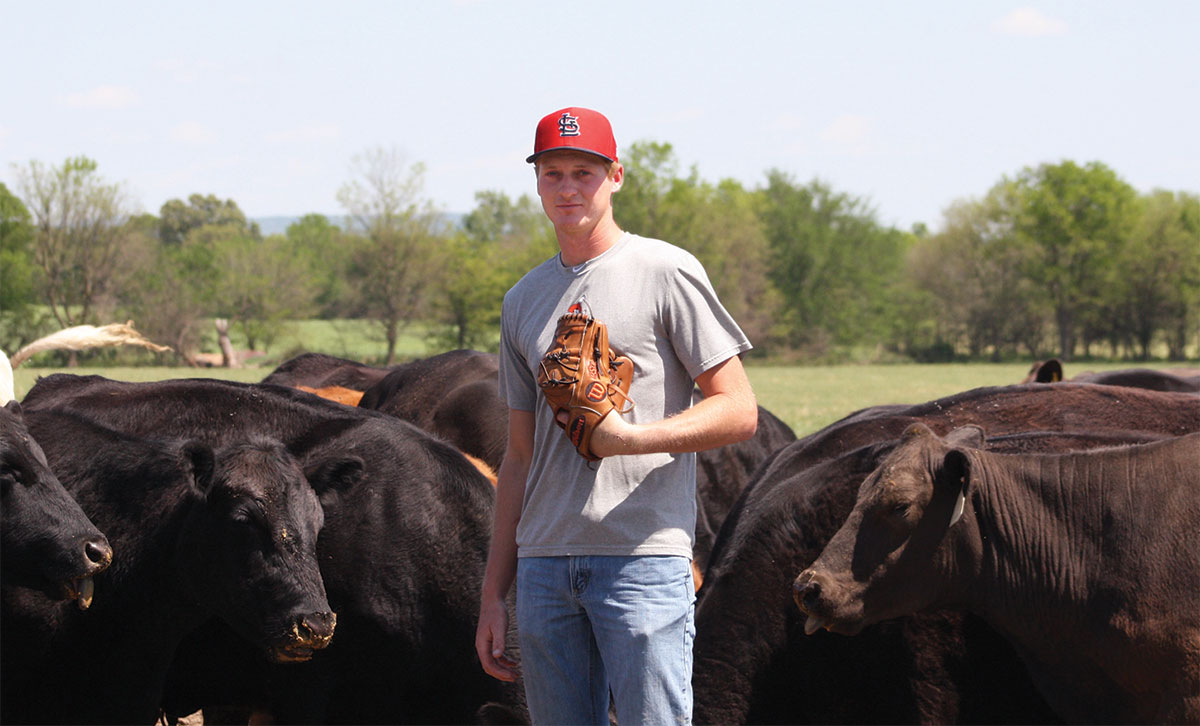
Phil Hofschulte of Miami, Okla., was an agriculture teacher for 29 years in Wyandotte, Okla., retiring in 2013. He and his wife Jan own and lease 600 acres, the base of operations for Hofschulte Show Pigs and Sires, as well as a commercial cattle herd. The couple met after a Wyandotte football game when Phil came in from a typical late-night of working with students.
“Nothing has changed,” Jan said. “He’s still never in the house until after dark.”
Recently Phil and Jan have turned over most of the Duroc, Yorkshire and crossbred show pig operation to their children. Younger son Chris is the production manager while daughter Natalie specializes in being a consultant for their show pig customers. The brother and sister also do most of the daily care. Eldest son Nick owns his own insurance agency but contributes by taking pictures and writing captions for advertising.
“The change made sense. Marketing is the key to staying alive and the younger generation has the technology savvy to take advantage of all the options,” Phil said.
In addition to advertising in major show pig magazines, the Hofschulte operation has four online sales in the spring and four in the fall supported by a website and a Facebook page with continual updates to keep people interested. Phil described an incident where they posted a cute picture on Facebook of a 2-day old pig only to receive a call the next day from a buyer who wanted to purchase the newborn at a very good price. Because Phil was concerned about the risks before weaning, he declined to sell but later sold it after weaning for considerably more.
“Online presence gets people to call and most of our sales are online with the pigs going to more almost 40 states,” Phil said.
The pigs are usually sold between 8 and 12 weeks old, at 40 to 70 pounds with 90 percent going to FFA and 4H members for exhibition.
In addition to selling show pigs, the Hofschultes also sell semen from their nine breeding boars. They also use this semen to AI their 40 sows, occasionally purchasing semen from other breeders. Conception rate with their own semen is 90 percent while it is only 65 percent from purchase semen which Phil believes is due to unavoidable shipping issues. The $16,000 high-selling boar at the National Barrow Show, Big League, is one of their breeding boars and has proven to be highly productive. One of his progeny won Reserve Grand Champion 4-H Market Hog at the Missouri State Fair, while another was the Division I Champion Crossbred Gilt at the Indiana State Fair. In addition the top nine pigs at their local county fair were raised by them and seven were sired by Big League.
The Hofschulte facilities include outside areas for gestation, a double L farrowing house used for three weeks until weaning when they are placed in a nursery for additional three weeks before being moved to a woodchip barn where people can see them. All of the pigs are fed high-quality rations under optimum conditions in order to produce the best muscle, hide and overall appearance possible.
Phil is especially pleased to use a feed line for his gestating sows and boars made by a company named Ralco out of Minnesota because that line was designed by a former student named Russell Fent, who went to work for the company after earning a PhD in animal nutrition. Hofschulte health protocols include giving newborns an iron shot to compensate for being raised indoors and microplasma and circ-virus vaccines at weaning with a booster two to three weeks later. Sows and boars are given worm and parasite control injections as well as lepto-parvo vaccines twice a year.
Phil served as a livestock judge for up to 30 counties at one time and still judges in five to six counties a year.
“What I see happening is pigs bred for a wider skeleton and shorter hip win shows even though that structure is too stout for easy birthing,” Phil said. “It might make more sense for winning show hogs to more closely resemble their commercial cousins while maintaining the special qualities of show hogs in muscling, hide, and attractive appearance.”
Phil’s commercial cattle herd is comprised of 200 contracted cattle sold at 800 pounds and 150 Angus/Simmental mommas serviced by eight bulls: two Charlois, three Angus, one Maine Angus and one SimAngus.
“The combination produces improved fertility and growth while maintaining a black hide,” Phil said.
Phil sells steers at 800 pounds by contract or at the local sell barn while developing the heifers to sell as bred heifers.
“Being flexible is important because responding to markets makes money,” Phil added. “I recently sold steers at 600 pounds because I made as much money as they would have if I had waited and then got to start with another group earlier.”







